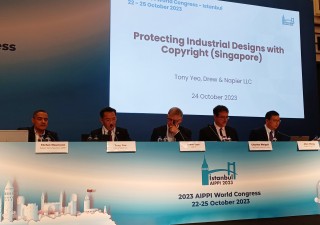Waiwera in hot water over bottle design claim
30 April 2020

A bottled water company has been found to have infringed copyright in the design of bottles and a logo for their branded mineral water.
Image credits: stuff.co.nz
Waiwera Water New Zealand and other parties were recently found to have infringed copyright in the design of bottles and a logo for their Waiwera-branded mineral water. Waiwera is a municipality about 35 km north of downtown Auckland, long known its water.
Rights to extract and bottle water from Waiwera were once controlled by a man named John Brown who, in 2005, entered into business with David Melrose to commercialize water products; Melrose would design the bottles, while Brown’s company, Siesta Holdings, would be responsible for production and marketing. The arrangement was recorded in a memorandum of understanding, which provided that each party would own its respective IP property.
Brown sold his share of the business to Waiwera Water in 2009. Melrose then tried, unsuccessfully, to sell his share of the business to Waiwera Water. As leverage for negotiations, Melrose terminated authority to use his IP in connection with the business. The relationship between Melrose and Waiwera Water subsequently deteriorated, say lawyers at Simpson Grierson in Auckland, which represented Melrose in a case before the High Court of New Zealand.
Waiwera Water continued to produce mineral water products using the bottle design and logo that Melrose had designed. Waiwera Water also began to allege that it owned the rights in, or had an exclusive licence to use, Melrose’s IP. It also sought registered protection for the IP and made claims against third parties.
“This case is significant due to the blatant disregard for his rights as the designer of the bottle packaging and the misleading and deceptive conduct it undertook to undermine his intellectual property rights,” says Sarah Chapman, special counsel at Simpson Grierson in Auckland. “The High Court recognized the designer’s inherent intellectual property rights and the terms agreed in the licence between the original parties. Factually, the designer never granted a license to the new company and terminated all rights to use of the designs going forward. The court recognized this and issued injunctions, orders to deliver up infringing goods, and declarations of infringement and breaches of the Copyright Act 1994 and Fair Trading Act 1986.”
Ownership of intellectual property rights is a matter of fact and when also governed by contract, it is easiest to prove where there is a clear, written agreement between the parties. The company tried to trademark aspects of the bottle design and used intellectual property rights it did not have any rights to – smart businesses should do their due diligence and know their rights before making allegations that cannot be supported.
According to Chapman, protecting the IP rights of each and every company, and even individuals, is important for the further growth of innovation, research and employment. In addition, protecting both of their rights helps in the growth of the economy too.
“Business owners and individuals should have appropriate and clearly documented intellectual property ownership structures in place to protect their rights,” she says. “If you believe your rights have been infringed or if you are unsure of intellectual property ownership structures in your organization, you should seek legal advice.”
One of the measures to consider is that businesses should think of the appropriate IP ownership structure for new ventures at the start.Chapman says that this is critical to clearly outline from the outset who owns what and what rights each party has to use the intellectual property. “This way, businesses can be assured that they can freely use that intellectual property without risk of infringement,” she says. “Similarly, if you think that your intellectual property rights are being infringed, you will have measures in place that outline ownership so that you can enforce your rights.”
Chapman adds that even if there is no written agreement or structured outline of ownership, intellectual property rights can still subsist.
“Copyright automatically subsists in the creation of a work and the default position in New Zealand is that the creator is the owner, subject to some exceptions such as works made in the course of employment and commissioned works,” she says. “Rights to unregistered trademarks and designs may also be enforced through the Fair Trading Act 1986, for example, if a third party uses the trademark or design in a way that is misleading or deceptive.”
Chapman adds, “This case is a timely reminder that intellectual property rights bring value to your business and are worth protecting. It also serves as a reminder to ensure you have a chain of title to key rights before buying a business – and before seeking to enforce it.”
Excel V. Dyquiangco






